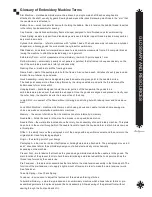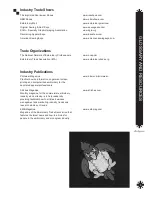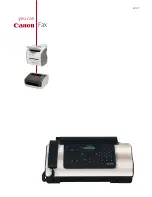
G
LO
SS
A
R
Y A
N
D R
ES
O
UR
C
ES
1
Glossary of Embroidery Terms
Appliqué – decoration or trimming cut from one piece of fabric and stitched to another to add dimension and
texture. If appliqué occupies a significant amount of the design, the stitch count is lower.
Backing – woven or nonwoven material used underneath the item or fabric being embroidered to provide sup-
port and stability. Can be hooped with the item or placed between the machine throat plate and the hooped
garment. Available in various weights and in three basic types: Cutaway, tearaway and specialty.
Bean Stitch – three or more stitches placed back and forth between two points. Often used for outlining
because it eliminates the need for repeatedly digitizing a single-ply running stitch outline.
Birdnesting – collection of thread between goods and needle plate, resembling a bird’s nest. Formation pre-
vents free movement of goods and may be caused by inadequate tensioning of the top thread or
flagging goods.
Blatt Stitch
– schiffli term meaning “to feed the yarn,” thereby producing a long zigzag stitch with threads lying
close together. Adapted for multihead use. See Satin Stitch.
Bobbin – spool or reel that holds the bobbin thread and which helps form stitches on the underside of the
fabric.
Bonnaz – chain stitch machine developed in the 1800s. It was named after its French inventor, Emile Bonnaz,
and first manufactured by the Cornely Co. of France.
Boring – openwork incorporated into embroidered designs; a sharp-pointed instrument punctures, or bores,
the fabric, and stitches are made around the opening to enclose the raw edges.
Buckram – coarse, woven fabric, stiffened with glue, used to stabilize fabric for stitching. Commonly used in
caps to hold the front panel erect.
Cartoon
– finished artwork of an embroidery design to be digitized. Usually six times larger than finished
design size, based on the art-to-stitching ratio historically used in the schiffli industry.
Chain Stitch – stitch that resembles a chain link, formed with one thread fed from the bottom side of the fab-
ric. Done on a manual or computerized machine with a hook that functions like a needle.
Chenille – form of embroidery in which a loop (moss) stitch is formed on the top side of the fabric. Uses heavy
yarns of wool, cotton or acrylic. Created by a chain stitch machine that has been adjusted to form this stitch
type. Also known as loop piling.
Column Stitch
– Formed by closely placed zigzag stitches. The width of the column is defined by alternating
points on each side of the column.
Complex Fill – refers to a digitizing capability that allows areas to be designated as voids at the same time the
design’s edges, or perimeter points, are defined. The design can thus be digitized as one fill area, instead of
being broken down into multiple sections.
Condensed Format – method of digitizing in which a design is saved in a skeletal form. A proportionate
number of stitches may later be placed between defined points after a scale has been designated. With a
machine that can read condensed format, the scale, density and stitch lengths in a design may be changed.
See Expanded Format.
Design Library/Catalog – a computer program which catalog a collection of digitized designs kept by embroi-
dery shops for embroiderers to access the design by subject, stitch count, number of colors or icon.
Digitize
– modern term for punching, reflecting the computerized method of converting artwork into a series
of commands to be read by an embroidery machine’s computer. See Punching.
Digitizing Tablet – a computer-aided design device used by digitizers to plot needle penetrations for embroi-
dery designs. Typically, a pencil drawing of the design is enlarged and then taped to this tablet. The digitizer
then uses a device known as a puck to indicate stitch types, shapes, underlay and actual needle penetra-
tions.
Editing – changing aspects of a design via a computerized editing program. Most programs allow the user
to scale designs up or down, edit stitch by stitch or block by block, merge lettering with the design, move
aspects of the design around, combine designs and insert or edit machine commands.
Emblem
– embroidered design with a finished edge, commonly an insignia of identification, usually worn on
outer clothing. Historically, an emblem carried a motto or verse or suggested a moral lesson. Also known as a
crest or patch.
Summary of Contents for GS1501
Page 30: ...GETTING STARTED 28 ...
Page 31: ...GETTING STARTED 29 The Control Panel Display ...
Page 62: ...EMBROIDERY BASICS 28 Notes ...
Page 64: ...MACHINE BASICS 2 ...
Page 65: ...MACHINE BASICS 3 ...
Page 70: ...MACHINE BASICS 8 ...
Page 71: ...MACHINE BASICS 9 ...
Page 78: ...MACHINE BASICS 16 Notes ...






































